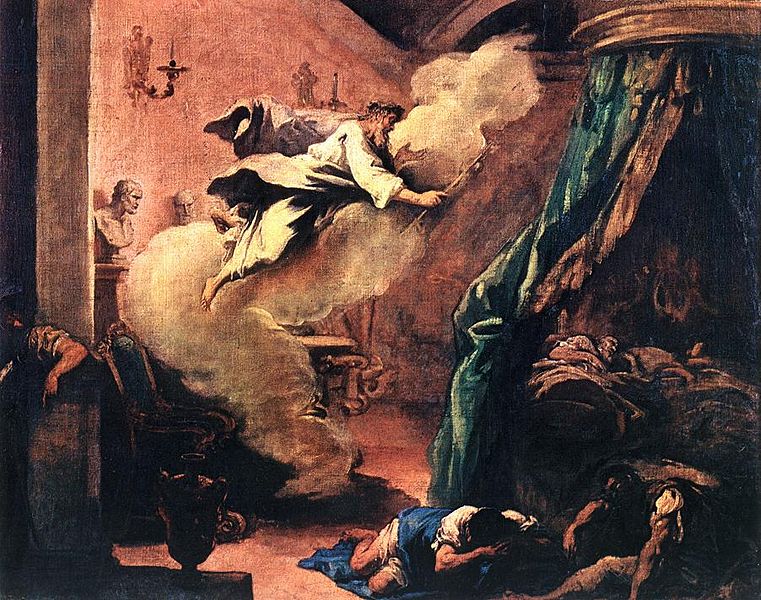Written by Jocelyn Hitchcock, Contributing Writer, Classical Wisdom
Medicine may often seem like a miracle. People are quick to praise god and marvel at the outcome of the doctor’s skill and training, with families often turning to hope of divine intervention of a higher power to save their loved one. This is not new to the modern age—nor should this come as a surprise.
Throughout history, the skill of doctors and their results have often been touted as the work of gods, or even magic depending on the healer and the time. And, just like today, entire cultures and regimes grew out of the notion of medicine and healing; just take a look at the ancient Greeks.
Asclepius, while not often depicted in common Greek receptions, is undoubtedly one of the more important of the gods and demigods. As the god of medicine, Greeks would find themselves lifting up sacrifice and prayer to him at one point or another. He was the son of Apollo and Coronis, with Apollo himself being the god of healing, plagues, and prophecy (amongst other things, of course).
Asclepius’ birth was traumatic, with Apollo killing Coronis for being unfaithful to him. As she was thrown on the funeral pyre, myth has it, Apollo realized she was pregnant and cut Asclepius from her womb. From there, Apollo took the baby to a centaur, Chiron, who raised him and taught him the art of medicine and healing.

The extraction of Asclepius from the abdomen of his mother Coronis by his father Apollo. Woodcut from the 1549 edition of Alessandro Beneditti’s De Re Medica.
His marriage to Epione, the goddess of soothing, made their union and offspring particularly suited to cover the ailments of the Greek world. Together they had five daughters and three sons. One of these was Hygieia, the goddess of health and cleanliness, and the source for our word ‘hygiene.’
Powers
Amongst Asclepius’ powers was the ability to heal all humans, even the dying and dead. His ability to help humans cheat death, or even resurrect them, enraged Hades, who didn’t like to see souls leaving his realm. Hades then went to Zeus to gripe about this, and Zeus took on the feud as his own, angered himself that Asclepius did not ask permission to revive the dead. To this end, Zeus struck down Asclepius with a thunderbolt and placed his body in the sky.
Depictions
Asclepius’ symbol is a staff with a serpent wrapped around it. If this depiction sounds familiar, it’s because it is. This symbol adorns most ambulances and pharmacies, as well as hospitals. However, it’s also common to see a staff with two serpents entwined around it, the Caduceus staff, which is most closely related to Hermes and not Asclepius.
In ancient art, Asclepius is portrayed in sculpture, pottery, mosaics, and coins. He is shown with a full beard, his staff, and a simple himation (an outer garment worn by the ancient Greeks over the left shoulder and under the right.). Since the honoring of Asclepius attracted patrons from all over the Greek world, his presence in art throughout the city states and regions is quite common and uniform.
Epidaurus
One of the most famous temples of Asclepius is found at Epidaurus, originally founded in the 6th century BCE but with most of the buildings now dating to the 4th century BCE. This sprawling sanctuary worked to cater to the needs of any of the ill and feeble.
The Sanctuary of Asclepius at Epidaurus is a UNESCO world heritage center and is located in a valley in the Peloponnese. In the sanctuary is a theater and tholos (a large ceremonial tomb) dating to the 4th century, hospital buildings, hotel style convalescent buildings, baths, libraries, and sports arenas.
The columned Abato, or Enkoimeterion, building was designed for overnight visitors, after they had gone through a series of purification rituals. In their dreams, Asclepius was to appear to them and offer insight to cures and remedies for their ailments, to later be administered and carried out by themselves or priests. At the temples and for sacrifices, small replicas of the injured body parts (like feet or arms) would be offered to the god during sacrifice with a prayer lifted up asking for healing and attention.
The theater at Epidaurus is said to be one of the best of its kind, the acoustics shocking visitors even today. In the summer, you can still catch plays and concerts put on for the public.











No comments yet. You should be kind and add one!
Our apologies, you must be logged in to post a comment.